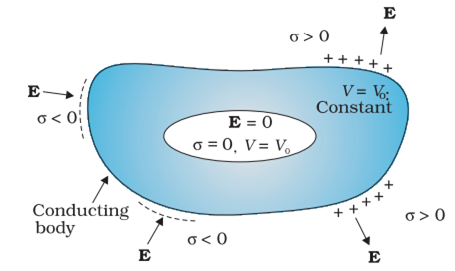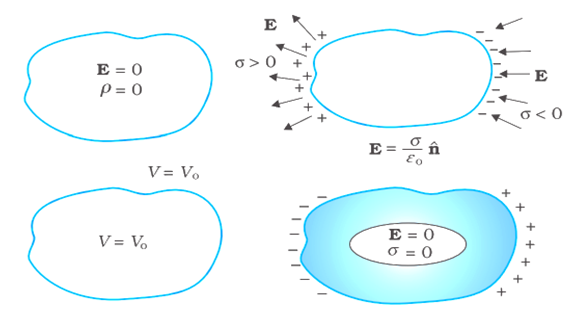CBSE
Class 10 Class 12
Conductors contain mobile charge carriers. In metallic conductors, these charge carriers are electrons. In a metal, the outer (valence) electrons part away from their atoms and are free to move. These electrons are free within the metal but not free to leave the metal.
In an external electric field, they drift against the direction of the field. The positive ions made up of the nuclei and the bound electrons remain held in their fixed positions. In electrolytic conductors, the charge carriers are both positive and negative ions.
In the static situation, E should have no tangential component. Thus electrostatic field at the surface of a charged conductor must be normal to the surface at every point.
where σ is the surface charge density and nˆ is a unit vector normal to the surface in the outward direction.
Since E = 0 inside the conductor and has no tangential component on the surface, no work is done in moving a small test charge within the conductor and on its surface. That is, there is no potential difference between any two points inside or on the surface of the conductor.
The electric field inside the cavity of the conductor is always zero. Whatever be the charge and field configuration outside, any cavity in a conductor remains shielded from outside electric influence. This is known as electrostatic shielding.

Some important electrostatic properties of a conductor

In the static situation, the free charges have so distributed themselves that the electric field is zero everywhere inside. Electrostatic field is zero inside a conductor.
There is no net charge at any point inside the conductor, and any excess charge must reside at the surface.